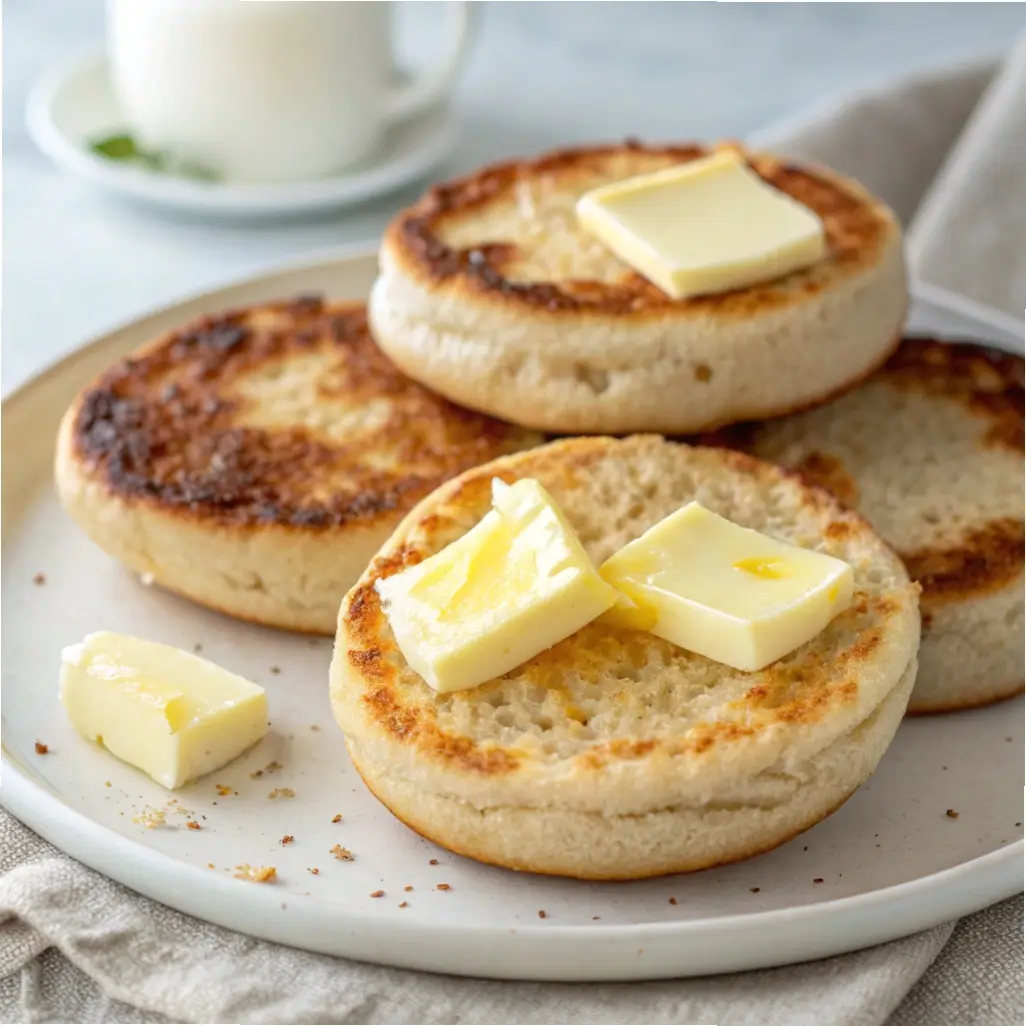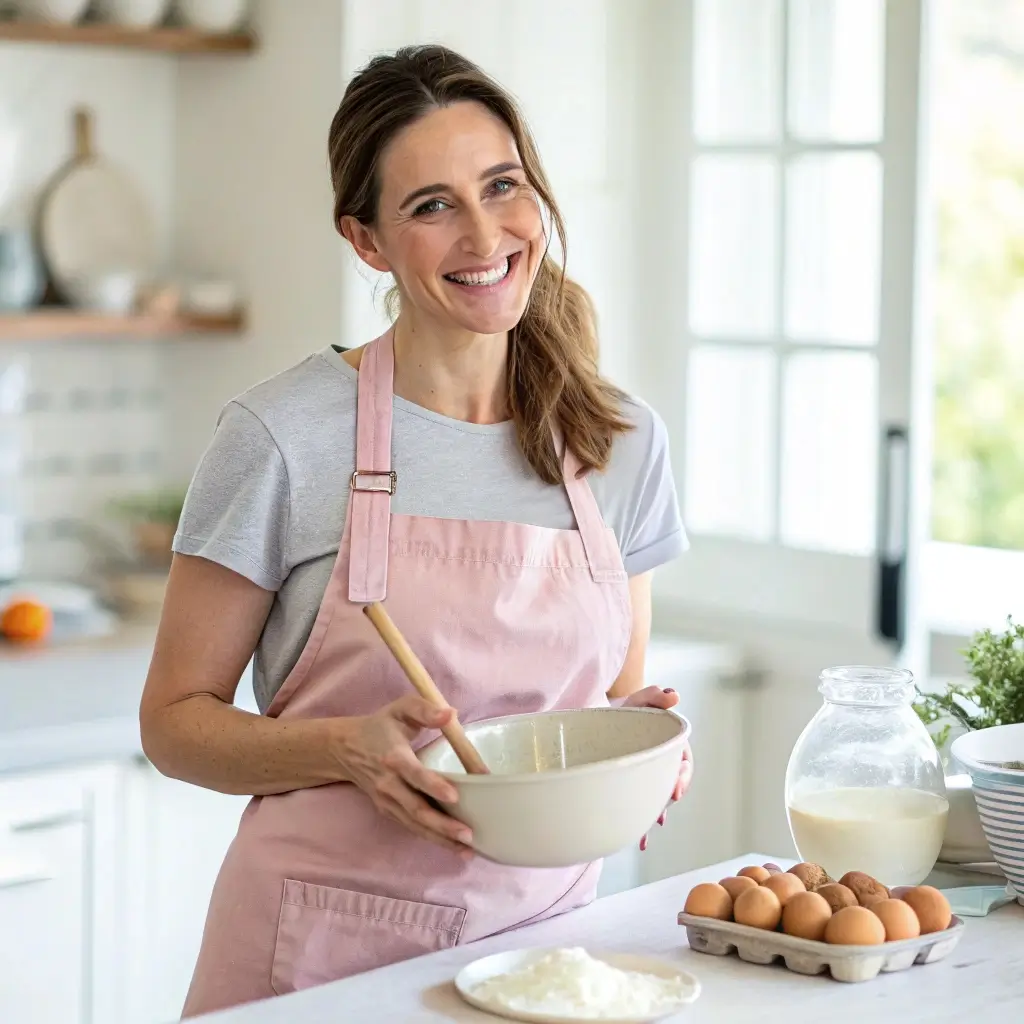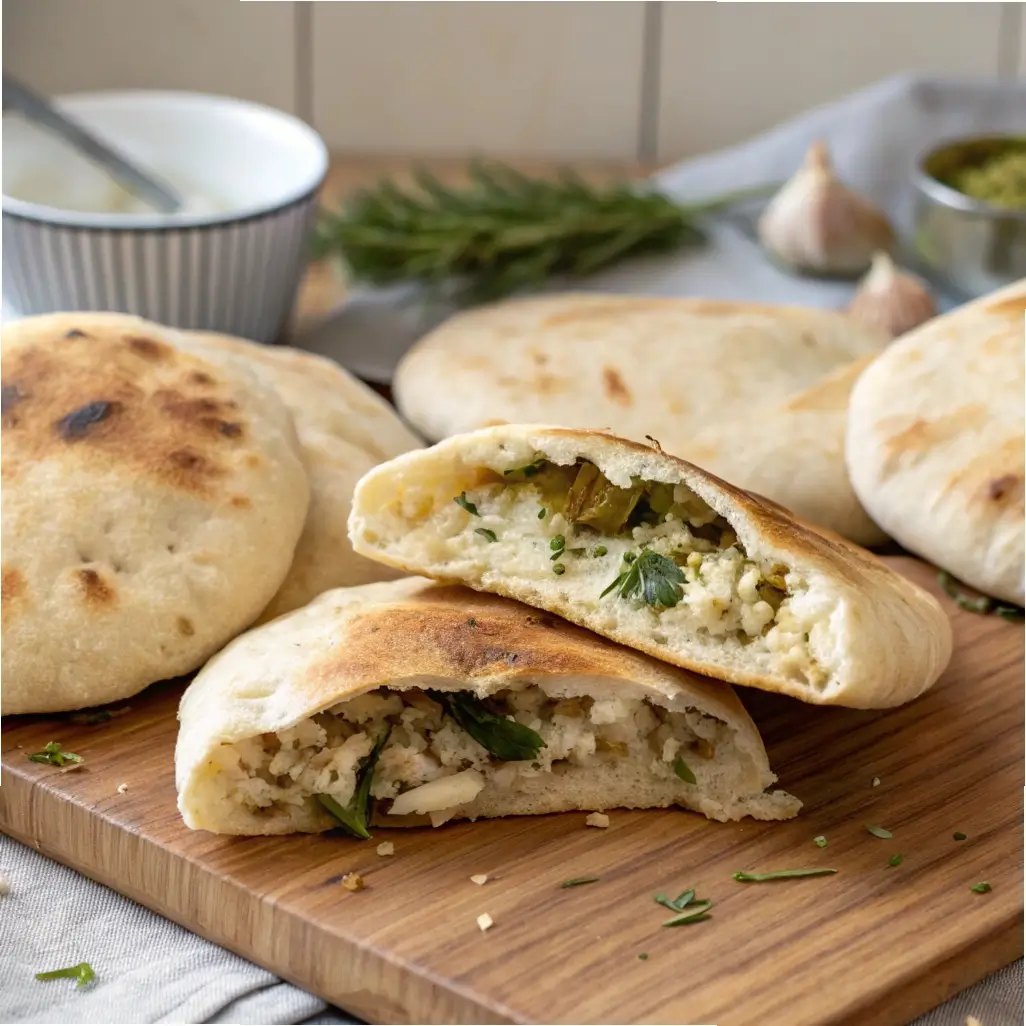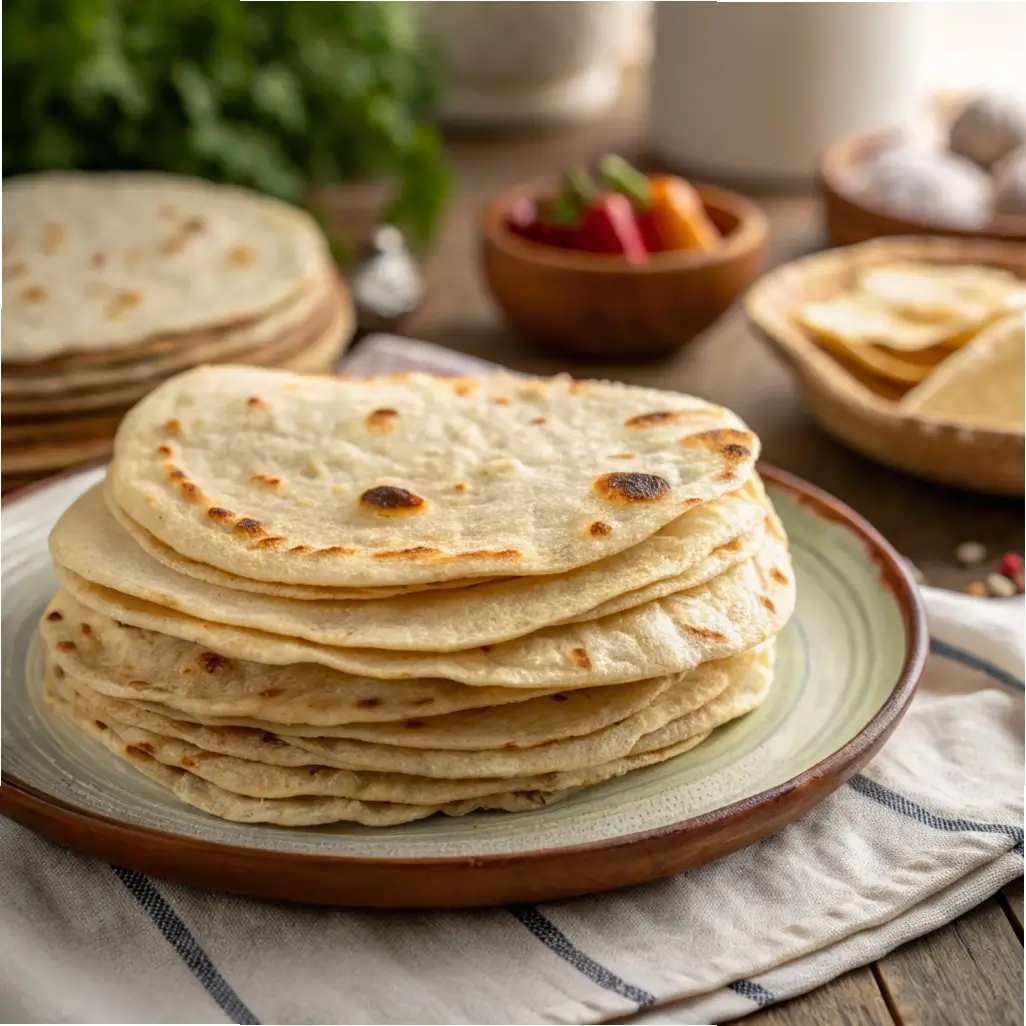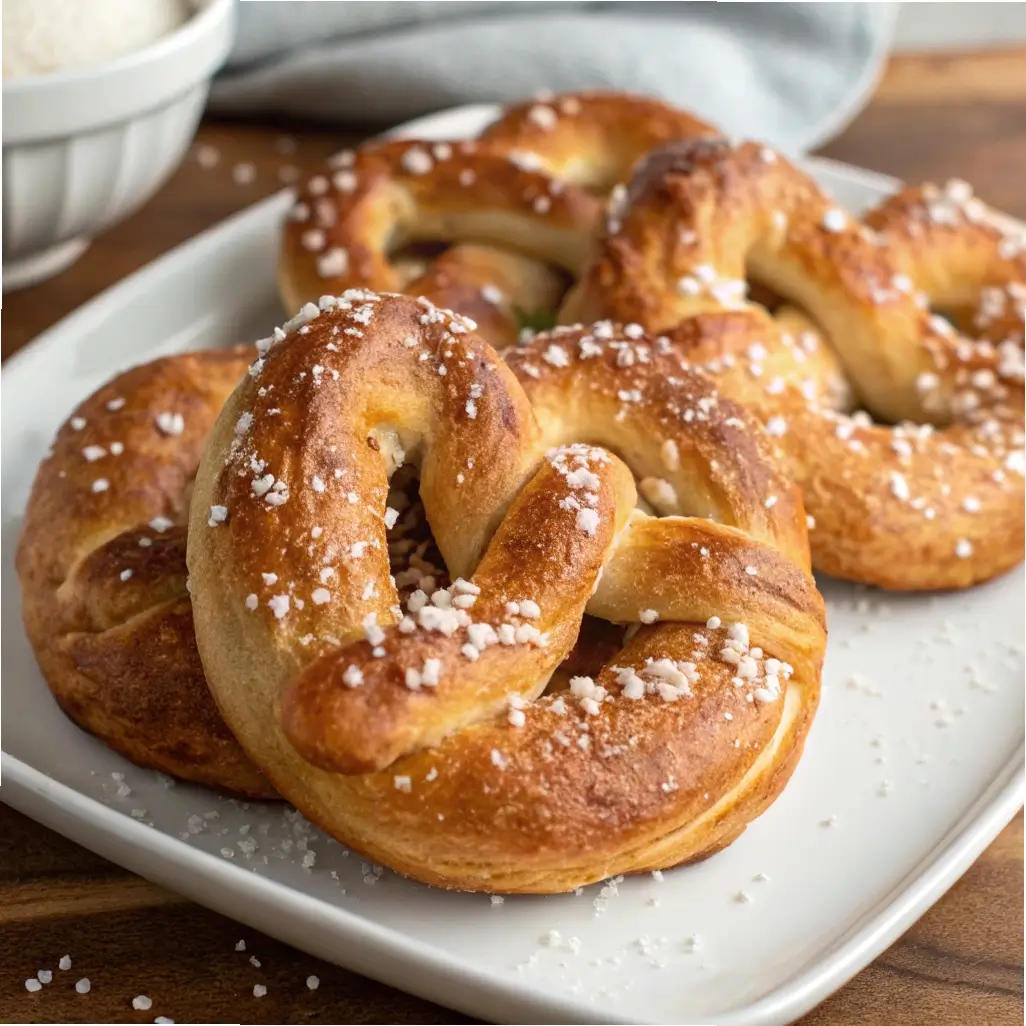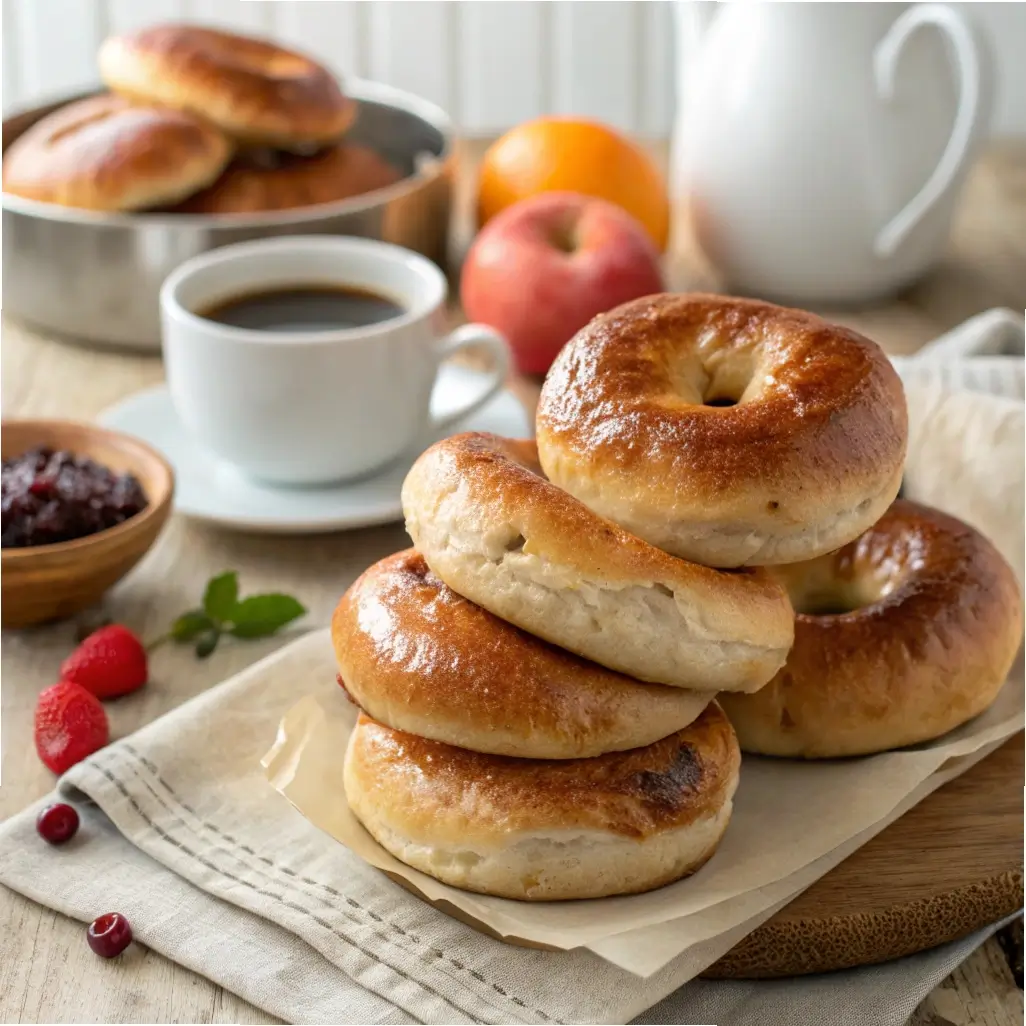Contents
There’s something comforting and satisfying about biting into a homemade English muffin: crunchy on the outside, tender and airy inside, with those characteristic “nooks and crannies” holding melted butter like tiny wells. Making them at home is deeply rewarding — and when you use sourdough discard in the dough, you get added flavor, moisture, and a way to avoid waste.
These sourdough discard English muffins combine the gentle tang and moisture benefit of discard with a traditional muffin texture. You don’t need a starter feed just before baking—this recipe is designed to use unfed discard. With patience, consistent technique, and a few tips, you can make breakfast sandwiches, eggs Benedict, or cozy buttered muffins any morning.
In this article, we’ll cover:
-
Ingredients and substitution notes
-
Step‑by‑step instructions including first/second rise, shaping, griddling, and finishing
-
Tips to promote the classic texture and “nooks”
-
Flavor variations
-
Serving ideas and pairings
-
Storage, freezing, and reheating
-
Troubleshooting common issues
-
Frequently asked questions
Let’s get started on making warm, fluffy discard English muffins you’ll want to toast again and again.
Ingredients & Notes
Below is the ingredient list for about 8 muffins (size depending):
| Ingredient | Amount | Role & Notes |
|---|---|---|
| Sourdough discard (unfed) | ½ cup (≈120 g) | Adds moisture, flavor, and richness |
| Warm water | ¼ to ⅓ cup (60–80 ml) | Hydrates and activates gluten |
| Milk (or plant-based milk) | ¼ cup (60 ml) | Adds tenderness and aids browning |
| Oil or melted butter | 1 tablespoon | Adds richness and soft texture |
| Sugar or honey | 1 tablespoon | Helps browning and yeast activity |
| Instant yeast | ½ to 1 teaspoon | Aids rise and structure |
| Salt | ½ teaspoon | Balances flavor |
| All-purpose flour | ~1½ to 1¾ cups (≈180–210 g) | Provides structure |
| Cornmeal or semolina (for dusting) | ~2 tablespoons | Prevents sticking and gives texture |
Tips & Substitutions
-
Because discard hydration varies, begin with the lower water amount; adjust if dough seems too stiff or dry.
-
Use high-protein flour for better chew.
-
Plant-based milk works if you avoid dairy.
-
Oil adds tenderness; you may substitute with melted coconut oil or vegan butter for dairy-free.
-
Dusting with cornmeal or semolina on shaping surfaces helps prevent sticking and contributes texture.
Equipment You’ll Need
-
Mixing bowl
-
Measuring cups & spoons
-
Wooden spoon or spatula
-
Clean work surface for kneading
-
Kitchen towel or plastic wrap
-
Ring molds or metal biscuit cutters (2.5–3 inch), optionally
-
Baking sheet or tray lined with parchment
-
Heavy griddle, cast iron skillet, or nonstick pan
-
Cooling rack
-
Optional: digital thermometer to check internal temperature
Step‑by‑Step Instructions
1. Mix the Dough
-
In a bowl, combine warm water, milk, sugar (or honey), and yeast. Let sit ~5 minutes until foamy (if using fresh yeast).
-
Stir in the sourdough discard and oil (or melted butter).
-
Add salt.
-
Gradually mix in flour until a soft, slightly sticky dough forms; stop when dough pulls away from bowl but still feels moist.
2. Knead & First Rise
-
Turn dough out onto lightly floured surface. Knead 5–7 minutes until smooth, elastic, and slightly tacky.
-
Shape into a ball, place in lightly oiled bowl, and cover. Let the dough rise in a warm place for ~45–60 minutes, or until roughly doubled.
3. Shape English Muffins
-
Gently deflate the dough and transfer to a surface lightly dusted with cornmeal (or semolina).
-
Press dough into a disc ~1‑inch thick.
-
Using a 2.5–3 inch ring mold or biscuit cutter, cut rounds. Reroll scraps gently to salvage dough.
-
Place the rounds spaced apart on a parchment-lined tray dusted with cornmeal.
-
Cover lightly and let rest for 20–30 minutes until puffy.
4. Preheat Griddle or Pan
-
Meanwhile, heat a thick griddle or cast iron skillet to medium‑low heat (around 325–350 °F, if using thermometer). Let it warm for several minutes to ensure even heat.
5. Cook the Muffins
-
Carefully transfer muffins to the preheated griddle (remove backing parchment if necessary). Cook ~5–7 minutes per side, loosely covering with a lid if needed to trap heat.
-
Flip each muffin carefully and cook the other side until golden. You want internal temp ~190–200 °F (88–93 °C) when done.
-
As they cook, you’ll see gaps forming (the nooks & crannies) in the interior—this is what you want.
6. Finish in the Oven (Optional)
-
For a crisp top, you may place the muffins on a baking sheet and bake in a preheated 375 °F oven for 5 minutes after griddling, but this step is optional.
7. Cool & Split
-
Let muffins rest on a rack. Once cool enough to handle, split them with a fork or knife to preserve the texture.
-
Toast or serve fresh and enjoy.
Tips to Promote “Nooks & Crannies” Texture
-
Proper cooking heat and time: Low and slow on griddle helps interior steam and pockets form before crust hardens.
-
Gentle rising: Don’t overproof — moderate rise helps interior structure.
-
Moisture retention: The combination of discard + milk helps interior stay moist so pockets stay open.
-
Dusting surface: Cornmeal or semolina under dough gives friction and texture.
-
Flipping technique: Flip gently but ensure even heat contact.
-
Optional finishing bake: Helps crisp top lightly, giving contrast to interior.
Flavor Variations & Add-Ons
-
Everything-style muffins: Top rounds with sesame seeds, poppy seeds, garlic flakes, onion bits, coarse salt before cooking.
-
Herb & cheese: Mix finely chopped herbs and shredded cheese (or dairy-free cheese) into dough.
-
Cinnamon sugar: After splitting, butter lightly and sprinkle cinnamon + sugar for sweet version.
-
Garlic herb brush: After cooking, brush with melted garlic‑herb butter or olive oil + herbs.
-
Whole grain blend: Replace up to ¼ of flour with whole wheat or spelt — adjust moisture slightly.
-
Spicy kick: Add a pinch of chili flakes or smoked paprika to dough for subtle heat.
Serving Suggestions & Pairings
-
Breakfast sandwiches: Egg + cheese + veggies inside split English muffin.
-
Classic toast: Slather butter, jam, nut butter, or avocado toast.
-
Eggs Benedict base: Use split muffins for cottage or vegan eggs Benedict.
-
Savory open-faced: Top with hummus, roasted veggies, or smoked salmon.
-
Sweet version: Spread with nut butter + banana, or yogurt + fruit.
-
Bread basket: Include muffins in a morning bread spread with rolls and pastries.
-
Side with soups: Use halves to scoop or dunk into soups and stews.
Storage, Freezing & Reheating
-
Short-term storage: Once cooled, stack muffins in a cloth-lined container for 1–2 days. Use parchment between layers.
-
Freezing: Freeze muffins in a sealed bag for up to 2 months, preferably after splitting.
-
Reheating: Toast split muffins in a toaster, or warm in oven (~325 °F / 160 °C) for 5 minutes.
-
For soft results, wrap in foil before warming; for crisper, leave uncovered for last minute.
Troubleshooting & Common Mistakes
| Problem | Likely Cause | Fix / Preventive Tip |
|---|---|---|
| Muffins fail to puff or open pockets | Insufficient heat or low griddle temp | Preheat thoroughly, use correct heat setting |
| Interior too dense or doughy | Underbaked or dough too tight | Extend cooking time, relax dough, measure flour carefully |
| Exterior too dark before interior cooked | Heat too high | Lower flame, cook longer on each side |
| Muffins stick to griddle | Griddle not hot or insufficient dusting | Preheat well, use light oil or dusting underneath |
| Splitting ruins interior texture | Knife split can crush nooks | Use fork to split, gently twist apart |
Frequently Asked Questions
Will the discard make these muffins taste sour?
Only subtly. In the balance of dough, milk, salt, and cooking, the discard’s tang is minor — you get soft, slightly nuanced flavor rather than full sourness.
Do I need to feed the starter before using discard?
No — this recipe is designed for unfed discard, so you can use your discard directly.
Can I make these gluten-free?
You may try using a gluten-free flour blend with binder agents, but the pocket formation and chew will differ significantly. You’ll need to experiment with hydration and structure.
Is yeast required?
Yes — a small amount of yeast ensures the rise, structure, and pocketing reliability. Discard alone may not provide consistent results in this format.
How do I know when they’re cooked?
The muffins should be golden on both sides, have interior sets (no raw dough), and an internal temperature (if measured) about 190–200 °F (88–93 °C). The bottom should sound slightly hollow when tapped.
Can I scale this recipe?
Absolutely — multiply all ingredients proportionally and bake in batches. Watch proofing and cooking times, and don’t overcrowd the griddle.
Final Thoughts
These Toasty Sourdough Discard English Muffins bring bakery-style breakfast right into your kitchen using ingredients you already have. They combine the signature chew and pocket texture with the gentle tang and moisture boost of discard.
Once you master the technique of mixing, rising, and griddling, you can experiment with flavors — herb, cheese, sweet — and make multilingual versions to suit your palate. Serve warm, split, toast, fill, and enjoy your homemade muffins with pride.
